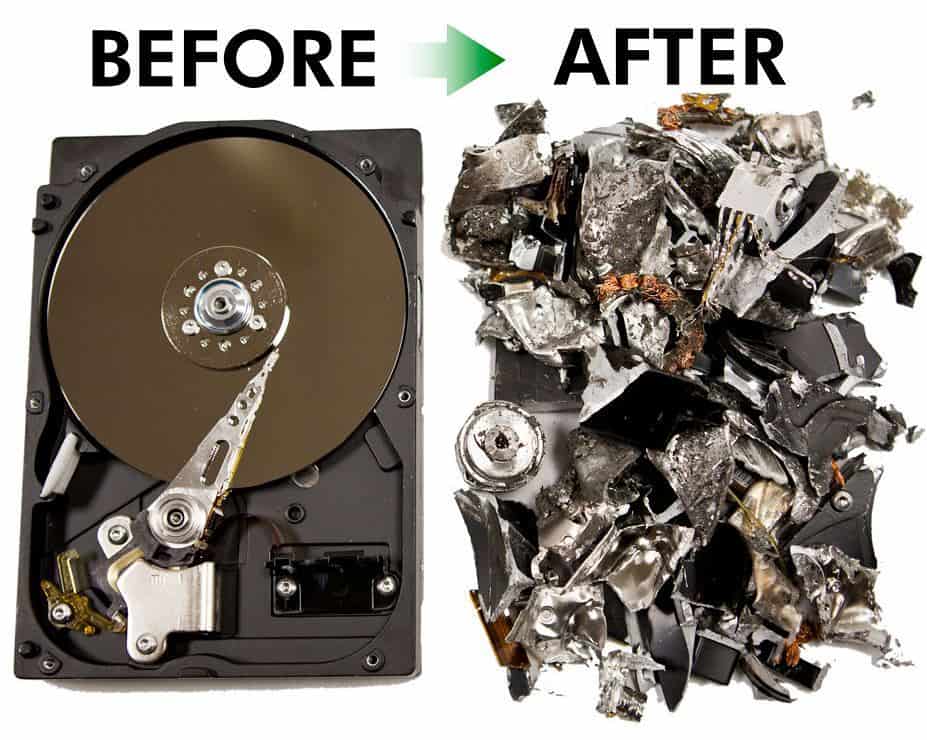Optimizing Cyber Security through Advanced Data Destruction Approaches
Optimizing Cyber Security through Advanced Data Destruction Approaches
Blog Article
The Relevance of Effective Data Destruction Practices in Safeguarding Sensitive Details and Ensuring Computer System Safety
In an age where information breaches are increasingly typical, the significance of efficient information devastation techniques can not be overstated. Executing durable data devastation techniques not only reduces these dangers yet likewise aligns with lawful compliance needs, making sure that companies maintain their credibility and foster customer depend on.
Comprehending Data Damage
Recognizing data destruction is vital in today's electronic landscape, where delicate info can easily be compromised. Efficient data devastation includes not simply removing files but making sure that information is irretrievable through comprehensive approaches. This procedure is vital for companies that deal with personal customer info, copyright, or inner records, as any breach can cause serious economic and reputational consequences.
Data damage encompasses various methods, including shredding physical media, degaussing magnetic storage gadgets, and using software-based services that overwrite data numerous times. Each method serves a specific purpose and has to line up with the level of sensitivity of the info being gotten rid of. Physical destruction is often favored for difficult drives consisting of extremely personal data, while software application methods could suffice for much less delicate information.
Furthermore, sticking to sector criteria and policies, such as the General Information Protection Guideline (GDPR) or the Health Insurance Coverage Transportability and Accountability Act (HIPAA), is critical for compliance and to reduce legal risks. Organizations should develop a robust data devastation plan, train workers on ideal practices, and on a regular basis examine their procedures to ensure that all delicate info is disposed of firmly and effectively.
Dangers of Inadequate Practices
Insufficient data destruction practices expose companies to considerable dangers that can have far-reaching effects. When sensitive information is not properly taken care of, it stays susceptible to unauthorized access, which can result in information breaches and identity theft. Such occurrences not just endanger the security of people but additionally tarnish the company's online reputation, causing a loss of client trust fund and prospective economic consequences.
Furthermore, governing compliance is progressively stringent in numerous industries. Failure to follow information devastation policies can cause hefty penalties and lawsuits against companies. These penalties can strain funds and draw away focus from core service procedures.
Furthermore, the abuse of residual information can result in copyright theft or business reconnaissance, threatening affordable benefits (data destruction). The effect of inadequate information damage extends beyond immediate economic losses; it can additionally result in long-term damages to brand name stability and market placement

Organizations have to acknowledge that information protection is not solely concerning preventing breaches; it likewise incorporates the responsible monitoring of data throughout its lifecycle. Neglecting reliable data destruction protocols can have devastating effects, highlighting the need for durable procedures to mitigate these threats.
Finest Practices for Data Devastation
Applying efficient information damage techniques is vital for securing delicate info and preserving conformity with regulatory standards. Organizations ought to adopt a multi-faceted approach to make certain that data is irretrievable, consequently stopping unauthorized gain access to and possible violations.
First, information need to be categorized based on level of sensitivity, enabling organizations to use suitable damage techniques tailored to the degree of threat. For digital information, making use of software-based data-wiping tools that conform with sector requirements can successfully overwrite existing data. Physical devastation techniques, such as shredding or degaussing, are essential for tools that save delicate info, ensuring total elimination.
Developing a clear data retention see this plan is crucial, describing exactly how long various sorts of info must be maintained prior to devastation. Routine audits of data storage space systems are also needed to determine out-of-date or unnecessary information needing removal.
Furthermore, training staff members on the relevance of data devastation and the specific methods to comply with fosters a society of safety within the company. Finally, keeping documents of data destruction processes offers liability and sustains compliance with external regulations and interior policies. By adhering to these best techniques, organizations can significantly alleviate the risks linked with information exposure.
Legal and Conformity Considerations

Failure to abide by these guidelines can result in extreme penalties, consisting of substantial penalties and reputational damage. Organizations has to apply a robust data destruction plan that straightens with these lawful frameworks and supplies clear guidelines on the correct methods of data disposal, whether physical shredding or digital cleaning.
Furthermore, keeping documentation of data damage tasks is crucial for showing conformity during audits or assessments. By focusing on lawful and conformity considerations, organizations can boost their information protection pose and foster depend on with clients and stakeholders, ultimately adding to a much more secure information administration atmosphere.
Benefits of Effective Information Devastation
Effective information destruction YOURURL.com practices extend beyond mere conformity; they provide significant advantages to organizations that prioritize them. By ensuring that delicate info is irretrievably destroyed, companies alleviate the danger of information breaches and the potential economic effects linked with them. This proactive technique not only safeguards versus unauthorized access but likewise enhances the general dependability of the company in the eyes of stakeholders and customers.
Implementing durable data damage approaches, such as physical damage of storage space gadgets or innovative data cleaning strategies, adds to the strengthening of a company's cybersecurity posture. data destruction. It decreases the chance of intellectual residential or commercial property theft and safeguards exclusive information, consequently maintaining an one-upmanship in the marketplace
Conclusion
To conclude, efficient information destruction techniques are essential for securing delicate info and improving total computer security. By applying extensive methods such as degaussing, software application, and shredding overwriting, organizations can alleviate the threats associated with unapproved gain access to and information breaches. Adherence to regulatory standards, including GDPR and HIPAA, additional strengthens compliance and secures against legal consequences. Ultimately, a dedication to durable data devastation techniques promotes a culture of responsibility, therefore strengthening an organization's cybersecurity stance and preserving customer trust fund.

Report this page